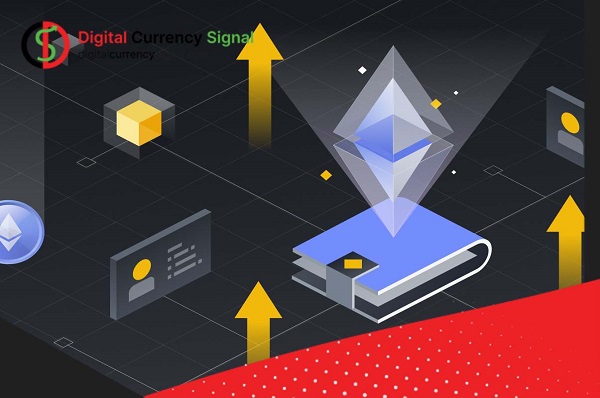Ethereum is one of the most popular and widely used blockchain protocols in the world. Like other cryptocurrencies such as Bitcoin and Litecoin, the Ethereum native blockchain coin can also be used for transactions. But Ethereum is designed to be more flexible and full of protocol features. One of the newest ERC standards to date is the ERC-4337 standard. This standard, like many early standards, is designed to create new features and capabilities that did not exist before. For this purpose, in this article, we will try to give you information about the ERC-4337 standard or the Ethereum smart account, check the goals of the ERC-4337 standard, and check how the new Ethereum standard works.
What is the ERC-4337 standard?
We can answer this question that the ERC-4337 standard is a new standard of the Ethereum currency network, which provides access to account abstraction without changing the consensus layer. This standard will be deployed on the Ethereum main blockchain in March 2023 and will allow transactions and contract creation on a single contract account. Interestingly, this technology supports the implementation of many user-friendly wallets and can be useful in increasing the adoption of Ethereum.
It is interesting to note that the ERC-4337 standard provides an opportunity to regulate the creation of digital coins in the Ethereum blockchain. This ERC-4337 transaction is called a user transaction. Also, this blockchain upgrade is usually done through a blockchain update rather than issuing a new ERC standard. One of the new features is that it provides the ability to de-identify user accounts on the Ethereum blockchain in a decentralized manner. In addition, with this approach, developers of decentralized applications (Dapps) can use all or part of the transaction fees of users and market makers.
What is the purpose of the ERC-4337 standard?
As I mentioned above, ERC-4337 is the latest Ethereum blockchain standard that aims to abstract the original accounts. This standard could put an end to the complicated user experience of digital currency wallets and thus increase their adoption. The new Ethereum standard has other goals. To do this, we will try to consider the purpose of the ERC-4337 standard in this part of the article.
- One of the goals of the ERC-4337 standard is account summarization. The best thing to know is that this standard allows users to benefit from a single calculator with smart contracts and EOA capabilities.
- Another goal of the ERC-4337 standard is localization.
- Another goal of the ERC-4337 standard is to avoid changing consensus.
- This standard accelerates the adoption of Ethereum, as its consensus layer is focused on rate-related improvements.
- Examples of these innovations include multi-signature signing, daily transaction limits, emergency account blocking, authorization, and privacy protection programs.
- Another goal of the ERC-4337 standard is to save transaction fees and time.
- Since linkers can package UserOperation objects into a transaction, they can save time and cost.

How does ERC-4337 work?
It is important to note that Ethereum’s main net developers have been working on ways to achieve account withdrawal for a long time. Before the EIP-4337 standard appeared, they proposed another plan to achieve the elimination of the account called EIP-2938. EIP-2938 was similar to the ERC-4337 standard but was intended to change the consensus standard. The ERC-4337 standard reverses this change. An interesting point is that the ERC-4337 standard does this by defining an object called UserOperation, which is similar to logging. Because each of them uses a different packaging concept. In the ERC4337 token standard, different users send user objects to separate mem pools. Bundlers bundle these objects into transactions and place them in blocks. The partner pays for the transaction and receives a fee paid by the UserOperation. They are like verifiers and they make their choices based on the value of the choice.
Why do we need ERC-4337?
To analyze the implementation of the ERC_4337 standard, we must first understand why this standard was proposed and implemented. Unlike the Bitcoin network’s Unspent Transaction Outputs (UTXO) module, the Ethereum protocol uses an account-based model. As a result, the Ethereum protocol tracks and updates account balances by confirming transactions. There are two types of accounts in Ethereum, each with its features and functions. The first group is the “EOA” account, which is controlled and owned by the user. The second group is smart contract accounts embedded in the Ethereum network itself. Both of these accounts can send, receive or hold Ethereum or existing tokens.
Most wallets in Ethereum, including Metamask, belong to the first group, and their functionality is limited by EOA rules. Relying on private keys to access accounts and requiring all transactions to be signed is one limitation that can be described in this context. As a result, the wallet setup methods and security measures associated with private keys are often complex and user-unfriendly. If users lose their refund amount, they usually lose access to their wallets. The ERC-4337 standard removes such restrictions.
What is the purpose of ERC-4337?
- account capture
- Decentralization
- Preventing consensus changes using the ERC 4337 standard
- Ability to use new inventions
- Saving money and time
final word
The ERC4337 standard, also known as a smart account or abstract account, is a new feature for Ethereum decentralized wallets. This feature is still to be developed and according to some people, it will not have a big impact on the gas charges on this network. We’ll have to wait and see what happens as we continue to use this standard to make more complex transactions with the Ethereum blockchain.
The ERC_4337 standard provides the technical foundation necessary to support new wallets. Based on this standard, developers can create products that change the way digital currencies and users interact. Additionally, ERC-4337’s impact on user experience and cryptocurrency will increase in importance in the coming years.



